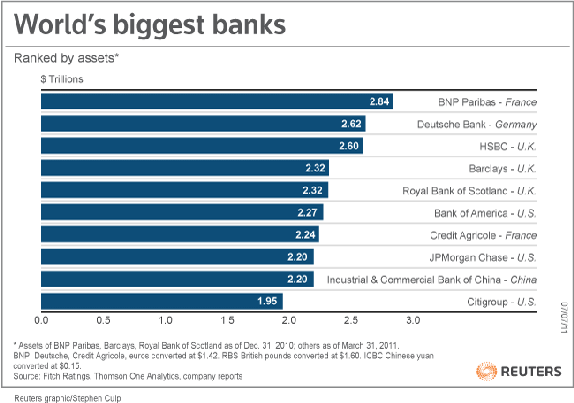While gold seekers in the stock market chase the Facebook IPO like NASCAR fans after a Dale Earnhardt Jr. autograph, my attention is leveled at JP Morgan Chase. I’m wondering if their recent stock hiccup is an isolated mistake or the beginning of a larger crisis.
This isn’t how most new investors act. Most hear bad news and run the other way.
You can profit from investing well-placed dollars into investments while others panic. In fact, I think it’s fun to prey on investors who throw logic out the window and panic.
In 2004, when investors panicked and sold investments around the Indian ocean after the tsunami, I snatched up iShare Singapore stock exchange shares (ticker: EWS). This was an easy decision: while many of their trading partners were hit hard, Singapore was not. There was bound to be a ton of shipping to rebuild the region, all to Singapore’s gain.
While not a homerun, the stock was an easy win. I’m not looking for huge gains….I’ll take good gains while minimizing my risk.
I didn’t want to prey on the awful event….I was very happy to prey on the morons who thought this was a good time to sell their investments in Singapore. Do your homework before panicking.
The market is usually a fairly efficient beast (I don’t want to have the “efficient market” argument in the comments, so please save them for another site), but during times of panic there’s money to make.
So, after JP Morgan Chase announced a $2 Billion dollar loss last week, hopefully you also thought: “this looks like an opportunity.”
Not so fast, cowboy.
Before you invest money into ANY struggling company, you should understand the risks of this strategy. I do well because I pick my stock market spots carefully.
It looks so juicy, though!
Agreed.
On May 1, JPMorgan (JPM) was trading at $43.79. Yesterday JPM closed at $35.79. That’s a loss of over 18%.
If your thoughts immediately turn to “too big to fail,” you might be right (jokesters are out in droves with “too big to regulate” and others today).
As of July of 2011, JP Morgan was the eighth largest bank in the world, according to Reuters:
By many accounts, while $2 billion is large to you and I, JPM manages a stable of $2.2 trillion in assets and should be able to weather this storm.
Still, we need to do our homework before investing.
Follow These Steps
1) Understand the company, not just the situation. There will be news around JP Morgan in the next few weeks that I can almost guarantee will affect the stock price. Even if none occurs, it’s better to plan for news. Because you don’t know what the headlines will read tomorrow, have a solid a feel for the operation and scope of your target company to process how the news affects your position in the stock market.
Buying distressed companies isn’t about the initial purchase. You have to follow and respond to breaking news closely.
2) Evaluate the Risks
- JPM could have severe penalties applied.
- JPM may have broken the law.
- Management may be forced to change (the Chief Investment Officer, Ina Drew, left yesterday).
- Negative publicity could affect the performance of other divisions of the operation.
3) Sector analysis
You might find your dream company with an “oops” situation that’s easily fixable is in a nightmare sector where events are working against you. Any chance of a stock rebound is wiped out by prevailing conditions.
I thought this might be the case in early 2006. Ford pre-announced during their earnings report earlier in the week that they were going to unveil a major restructuring plan on January 23. Although layoffs aren’t a good sign over the long term, these quickly buoy the bottom line, giving hope to investors that the company will turn the corner. On the surface, this looked like a great event to invest in; a sure win.
There were significant downsides in the sector: at this time, the Detroit auto scene was in shambles. Auto supplier Delphi had declared bankruptcy only months earlier. Chrysler and GM were experiencing pain of their own. Did I really want to bet on a nice uptick in Ford stock over the short term when other auto news might sink my gains?
I explored the situation further. GM had already announced for the quarter a few days earlier. Chrysler had already experienced their blood letting, so I didn’t expect any short term news to disrupt what was looking like a quick trade.
In the final analysis, I made the trade, but because of the larger situation in the sector, I committed a much smaller portion of the portfolio than I’d originally intended. Plus, I became adamant that I’d set a quick turnaround on the stock. I’m usually a long term investor, but in this case, I was looking for a quick win.
I got it.
The morning of January 23, Ford announced a 30,000 job cut and the details of the restructuring. It was as large as expected. A stock that was trading at $7.90 the Monday before closed at $8.65 on the 25th. I was out, though, selling at $8.60. Nearly 10% in a few days was enough risk for me. This was one of only two or three times I’ve ever made a quick trade, and I don’t normally recommend it.
JP Morgan isn’t the same situation, but hopefully you understand my point: by analyzing other auto companies, I minimized the chances that news from them would work against me.
In the case of JPM, you’ll need to consider that state of banking. Is there any pending legislation that may affect performance? Is 2008 or a similar melt down in this sector or the wider stock market likely to occur?
4) Set defenses in place. Beginning investors should always work with a defensive strategy. I prefer a stop loss, but you may have other ways to reduce risk, such as the use of options. If you use a stop loss, you’ll want to give it a wide berth off the current price. Any stop loss placed within a few percentage points of the current trading level is bound to trigger due to the increased volatility of the stock.
Widen Your Lens
Because of a high credit rating, JP Morgan debt has been expensive, usually trading well above par value. If you feel JPM isn’t going to go bankrupt, then maybe looking for panic in the debt rather than the stock market is a better option. Here are some reasons I like trading debt instead of equity:
- I know my end game (I’m guaranteed par value on the security at maturity as long as they don’t go belly up).
- I can still sell on the open market.
- I’ll receive dividends along the way, reducing my risk.
One such beast is a preferred stock. We’ll address preferreds in detail another day, but although they carry the name “stock,” a preferred acts much more like a bond.
A few questions to ask before investing in bonds or preferred stock:
- What is par value. Many JP Morgan preferreds are trading at $25.50 or higher currently, while par value is $25 for preferreds (it’s $100 on most bonds).
- What is the dividend? The stated dividend is based on the par value, so your dividend will vary from that stated on the preferred. If you’re using a website such as Bigcharts.com or Yahoo! Finance to evaluate the stock chart, the listed dividend is in fact the dividend you’ll receive at the current price.
Don’t just explore debt. Think further afield. Are there other companies that stand to win big because of JP Morgan’s stumble? Research these firms thoroughly before investing.
Final Thoughts
I’m not sure if I’m going to invest in JP Morgan. I’m more likely to buy here than in Facebook, a company with lots of hype and whose upside I don’t understand (most of my friends are tiring of Facebook, never a good sign for any product).
If you take anything from this discussion, I hope it’s the following:
– Think contrarian. When everyone else is running, ask “is this an opportunity?”
– Don’t buy immediately based on your contrarian “gut” reaction. Like buying a house or car, perform due diligence. Explore the company, the situation and the sector. Widen your lens to see if there are additional plays (such as debt or a competing company) that might make sense.
If this sounds like a lot of work, or individual stocks don’t fit your risk profile, stick with ETFs and mutual funds. Your chances of getting burned in your investment strategy is significantly reduced by staying diversified. Even if you do invest, don’t take large chances on “rebound” companies with significant portions of your portfolio.
Let’s pretend you were me: would you buy JP Morgan with a few “at risk” dollars? Are you jumping on this stock?


